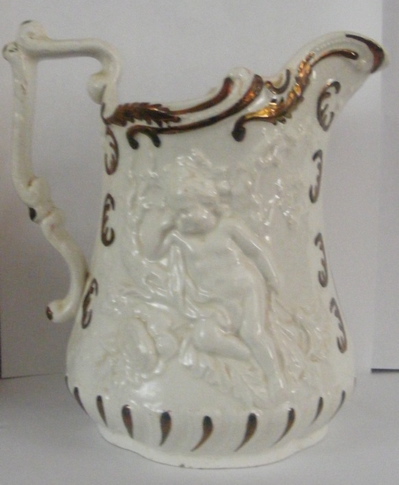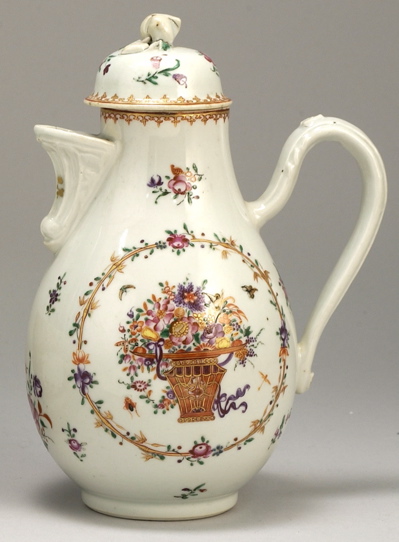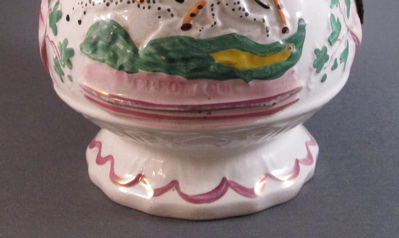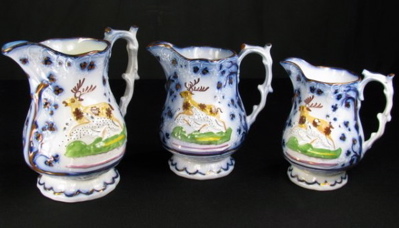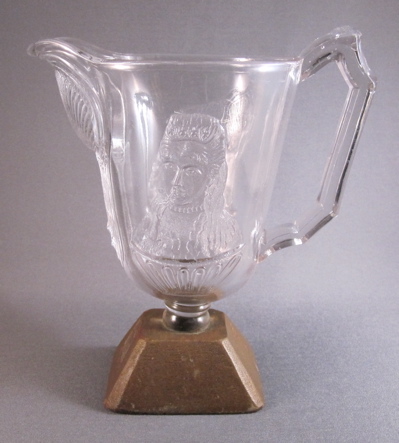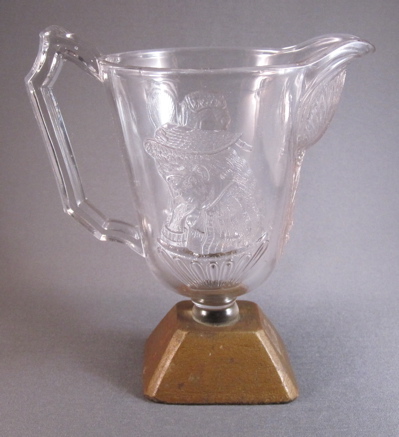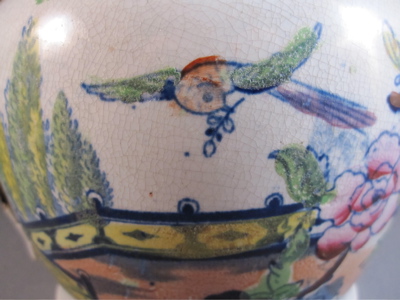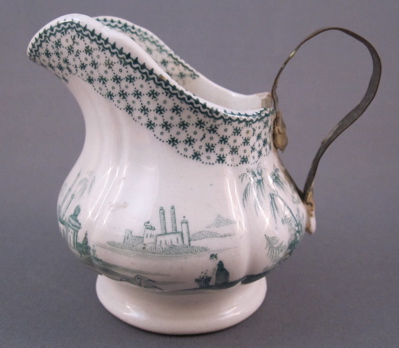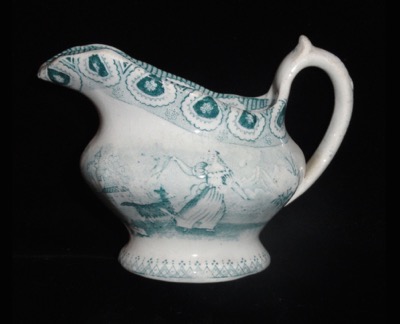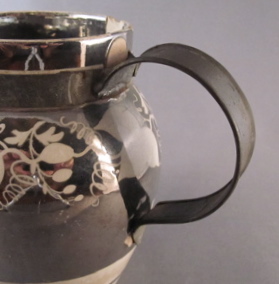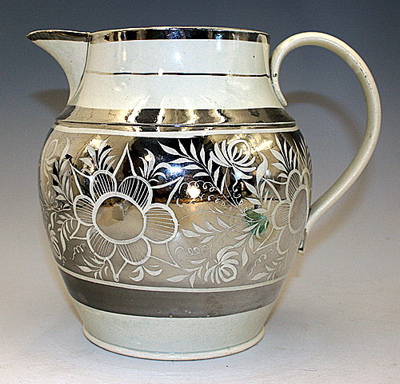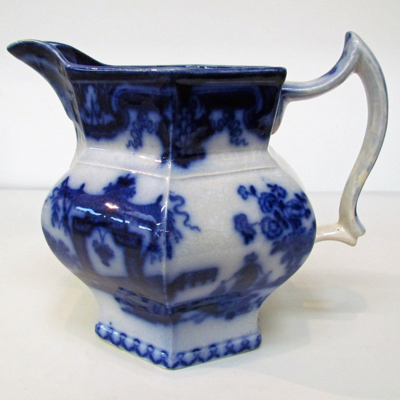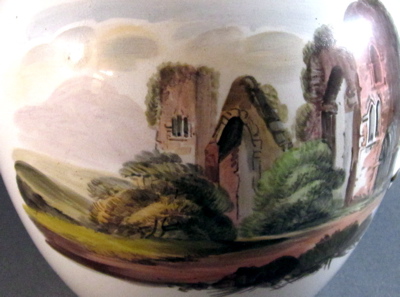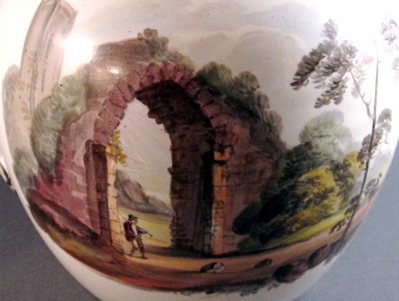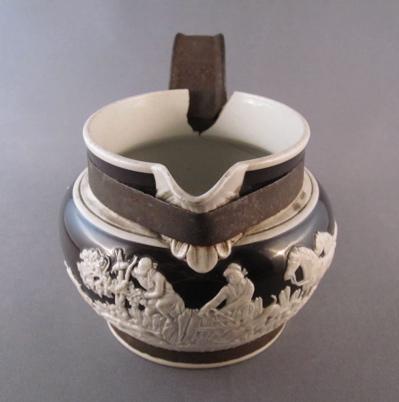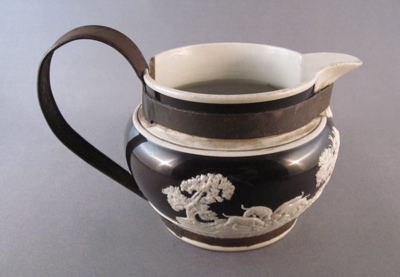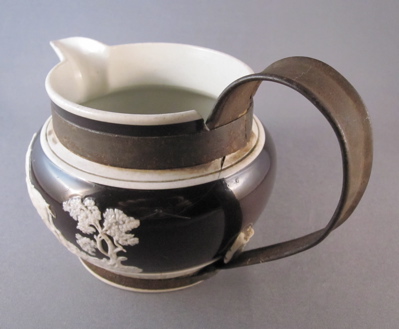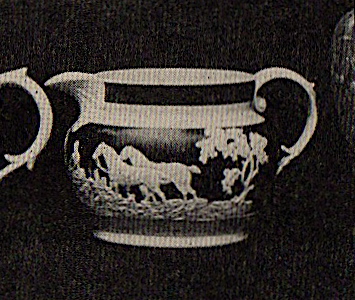Welsh pottery jug in the “Idle Apprentice” pattern made in Ynysmeudwy, West Glamorgan county, Southwest Wales
Jug measures 6″ high and is brightly decorated in polychrome glazes and pink lustre highlights
Relief design including a single cherub, grape clusters, flowers and scrollwork is found on both sides of the jug
Broken ceramic handle has been repaired with a crudely made metal replacement, including a multi-piece support band encircling the jug…
and wrapping around the broken handle fragment at the bottom
This same shaped jug in white, and more somberly decorated in copper lustre, shows its original ornate handle
Photo courtesy of Dorian’s Antiques





